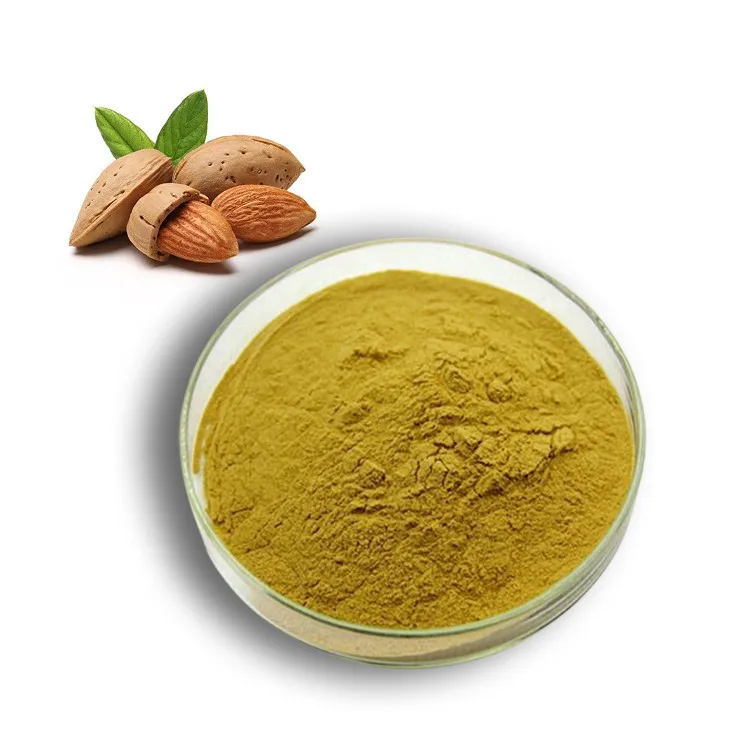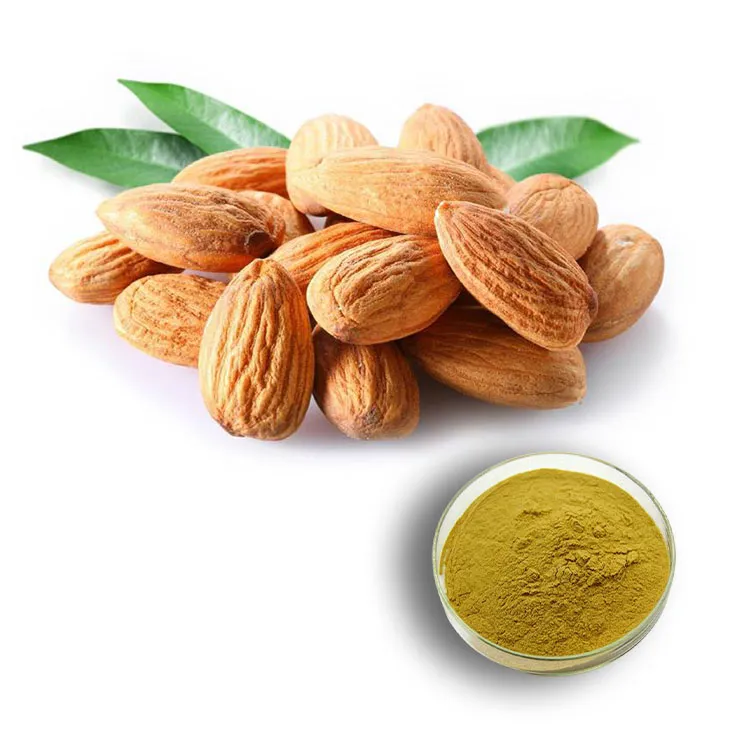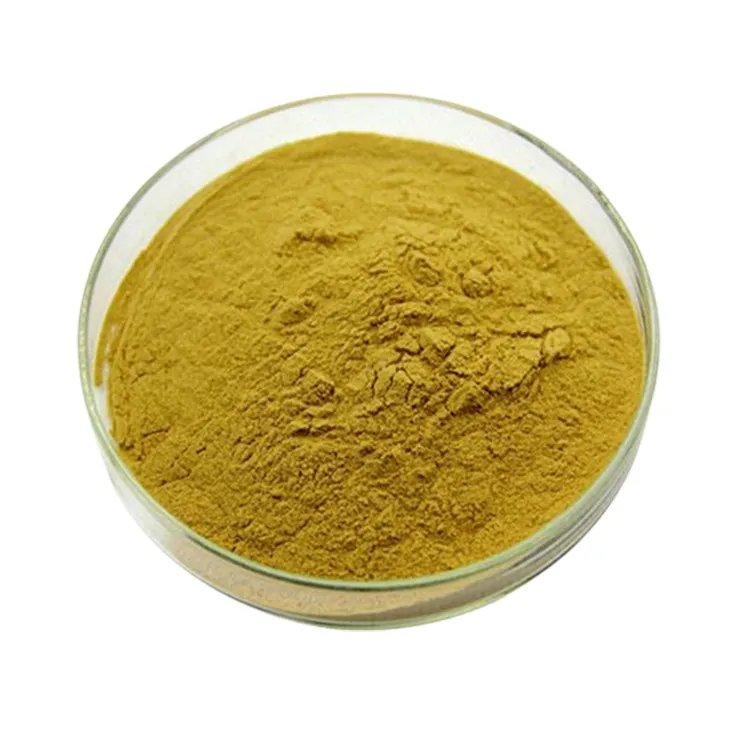- 0086-571-85302990
- sales@greenskybio.com
How to extract almond extract powder from plants?
2024-11-26

1. Introduction
Almond Extract Powder is a valuable product with various applications in the food, cosmetic, and pharmaceutical industries. Extracting it from plants requires careful consideration of several factors, from choosing the right plants to following proper extraction and purification procedures. This article will provide a comprehensive guide on how to obtain high - quality Almond Extract Powder from plants.

2. Plant Selection
2.1 Choosing the Right Almond - Related Plants
The first step in extracting Almond Extract Powder is to select the appropriate plants. True almonds (Prunus dulcis) are the most common source. However, there are different varieties of almonds, such as sweet almonds and bitter almonds. Sweet almonds are often preferred for food - related applications due to their pleasant taste. Bitter almonds, on the other hand, contain higher levels of certain compounds, such as amygdalin, which need to be carefully processed.- When choosing almonds, look for healthy, fully - developed nuts. Avoid those with signs of mold, insect damage, or other physical defects.
- Consider the origin of the almonds. Almonds from regions with proper agricultural practices and suitable climates are likely to be of higher quality.

3. Preparation of the Plant Material
3.1 Cleaning
Once the almonds are selected, they need to be thoroughly cleaned.- Remove any debris, such as leaves, twigs, or soil particles, that may be attached to the almonds.
- Rinse the almonds with clean water to wash away any surface contaminants.
3.2 Drying
After cleaning, the almonds should be dried.- Spread the almonds in a single layer on a clean, dry surface, such as a tray or a drying rack.
- Allow the almonds to dry naturally in a well - ventilated area. This may take several days, depending on the humidity and temperature of the environment.
- Alternatively, you can use a low - temperature drying oven. Set the temperature to around 40 - 50°C to prevent over - drying or damage to the almonds.

4. Extraction Methods
4.1 Maceration
Maceration is a common method for extracting compounds from plants, including almonds.- Coarsely grind the dried almonds. This increases the surface area available for extraction.
- Place the ground almonds in a suitable container, such as a glass jar or a stainless - steel vessel.
- Add a solvent to the ground almonds. Food - grade ethanol is often a good choice for extracting almond extract powder, as it is effective in dissolving the desired compounds and is safe for use in food - related applications. The ratio of almonds to solvent can vary, but a common ratio is about 1:5 (1 part almonds to 5 parts solvent by weight).
- Seal the container and let it sit for a period of time. This allows the solvent to penetrate the almond particles and extract the compounds. The maceration time can range from a few days to a few weeks, depending on the desired concentration of the extract. For example, for a relatively concentrated extract, a maceration time of about 2 - 3 weeks may be appropriate.
4.2 Filtration
After the maceration process, the mixture needs to be filtered to separate the liquid extract from the solid almond residue.- Use a filter paper or a fine - mesh sieve to perform the filtration. Place the filter in a funnel and pour the macerated mixture slowly through it.
- The liquid that passes through the filter is the crude almond extract. The solid residue left on the filter can be discarded or further processed for other purposes, such as using it as a natural fertilizer or in animal feed.

5. Purification and Concentration
5.1 Evaporation
To obtain a more concentrated almond extract powder, the crude extract obtained from filtration needs to be purified and concentrated. One method is evaporation.- Pour the crude extract into a shallow dish or a wide - mouthed flask.
- Place the container in a warm, well - ventilated area or use a rotary evaporator. If using a natural evaporation method, the process may take longer. The temperature should be kept low enough to avoid damaging the active compounds in the extract. For example, a temperature of around 40 - 50°C is often suitable.
- As the solvent evaporates, the concentration of the extract increases. Continue the evaporation process until the desired concentration is reached.
5.2 Solvent Removal
After evaporation, there may still be some residual solvent in the extract.- To remove the remaining solvent completely, techniques such as vacuum drying can be used. A vacuum dryer can effectively remove the solvent under reduced pressure, ensuring a pure almond extract.
- Another option is to use a desiccator with a suitable drying agent, such as silica gel or anhydrous calcium chloride. Place the concentrated extract in the desiccator, and the drying agent will absorb any remaining moisture or solvent.
6. Powder Formation
Once the purified and concentrated almond extract is obtained, it can be converted into a powder form.
- One method is freeze - drying. Place the concentrated extract in a freeze - dryer. The freeze - drying process involves freezing the extract and then reducing the pressure to allow the ice to sublime directly from the solid to the gas phase, leaving behind a dry powder.
- Another option is spray - drying. In spray - drying, the concentrated extract is sprayed into a hot drying chamber. The hot air rapidly evaporates the remaining moisture, and the extract is converted into a powder. However, spray - drying may require more specialized equipment compared to freeze - drying.
7. Quality Control and Storage
7.1 Quality Control
Quality control is essential to ensure the safety and effectiveness of the almond extract powder.- Test for the presence of contaminants, such as heavy metals, pesticides, or microbial contaminants. Use appropriate analytical methods, such as atomic absorption spectroscopy for heavy metals and microbiological assays for microbial contamination.
- Verify the concentration and composition of the active compounds in the extract powder. This can be done using techniques like high - performance liquid chromatography (HPLC) or gas chromatography - mass spectrometry (GC - MS).
7.2 Storage
Proper storage is crucial to maintain the quality of the almond extract powder.- Store the powder in a cool, dry place, away from direct sunlight. Exposure to heat, moisture, or light can degrade the quality of the extract.
- Use airtight containers to prevent moisture absorption and oxidation. Glass jars or aluminum - foil - lined pouches are good options for storing almond extract powder.
- Label the containers clearly with the product name, extraction date, and any relevant quality control information.
8. Conclusion
Extracting almond extract powder from plants involves a series of steps, from plant selection to final powder formation. Each step requires careful attention to detail, from choosing the right almonds and preparing the plant material properly to using appropriate extraction, purification, and drying methods. Quality control and proper storage are also important aspects to ensure the production of high - quality almond extract powder that can be used in various industries.
FAQ:
Q1: What are the suitable almond - related plants for extracting almond extract powder?
Typically, the common almond tree (Prunus dulcis) is a main source. However, some closely related Prunus species may also be considered in certain cases. The almonds from these plants should be healthy, fully matured, and free from diseases or pests.
Q2: What is the maceration process in extracting almond extract powder?
Maceration involves soaking the almond plant parts (usually the almonds themselves) in a solvent. This solvent can be something like ethanol or water. The almonds are left in the solvent for a certain period, usually several hours to days. During this time, the active compounds in the almonds gradually dissolve into the solvent, which is the first step towards obtaining the extract.
Q3: Why is filtration important in the extraction of almond extract powder?
Filtration is crucial as it helps to separate the solid parts of the almond (such as debris, insoluble fiber) from the liquid extract. After maceration, there are undissolved particles in the mixture. Filtration ensures that we get a pure liquid extract which can then be further processed to obtain the powder form. It also helps in removing any impurities that might have been present in the starting material or introduced during the maceration process.
Q4: How can we ensure the proper handling during the extraction of almond extract powder?
Proper handling starts from the collection of the almond - related plants. They should be harvested at the right time. During the extraction process, all equipment used should be clean and sterilized. The temperature and humidity during maceration and subsequent processes should be controlled. Also, the handling should follow good manufacturing practices to prevent contamination and ensure the quality of the final almond extract powder.
Q5: What are the purification methods for almond extract powder?
One common purification method is distillation if the solvent used is volatile. This helps to remove any remaining solvent impurities. Another method could be chromatography which can separate different components in the extract based on their chemical properties. Additionally, repeated filtration through finer filters can also contribute to purification.
Related literature
- Almond Extract: Production and Applications"
- "The Science Behind Extracting Compounds from Almond - related Plants"
- "Optimizing the Extraction of Almond Extract Powder"
- ▶ Hesperidin
- ▶ Citrus Bioflavonoids
- ▶ Plant Extract
- ▶ lycopene
- ▶ Diosmin
- ▶ Grape seed extract
- ▶ Sea buckthorn Juice Powder
- ▶ Fruit Juice Powder
- ▶ Hops Extract
- ▶ Artichoke Extract
- ▶ Mushroom extract
- ▶ Astaxanthin
- ▶ Green Tea Extract
- ▶ Curcumin
- ▶ Horse Chestnut Extract
- ▶ Other Product
- ▶ Boswellia Serrata Extract
- ▶ Resveratrol
- ▶ Marigold Extract
- ▶ Grape Leaf Extract
- ▶ New Product
- ▶ Aminolevulinic acid
- ▶ Cranberry Extract
- ▶ Red Yeast Rice
- ▶ Red Wine Extract
-
Apricot Powder
2024-11-26
-
Nutmeg Extract
2024-11-26
-
Mulberry leaf Extract
2024-11-26
-
Wheat Germ Extract
2024-11-26
-
Ginger Extract
2024-11-26
-
Black Pepper Extract
2024-11-26
-
Hawthorn Extract
2024-11-26
-
Uridine-5'-monophosphate Disodium salt
2024-11-26
-
Ivy Extract
2024-11-26
-
Avocado Extract Powder
2024-11-26





















